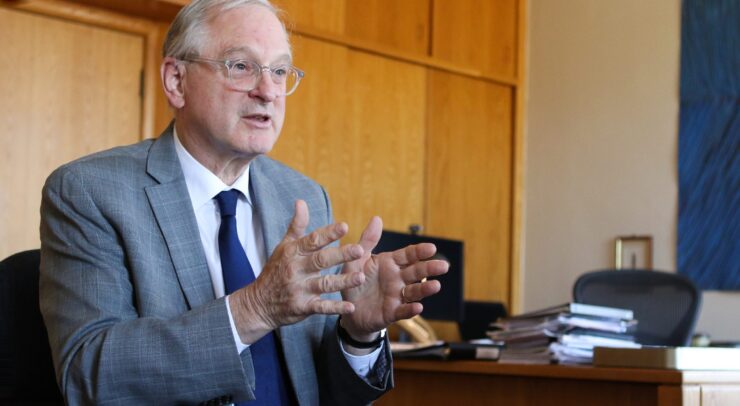project is part of U of O five-year Indigenous Action Plan
While most students and professors are returning back to school virtually or on campus, the University of Ottawa is welcoming passer-bys with a new welcome sign featuring various Indigenous languages.
“I think [it’s] much more than just a sign, It is a beacon of art and culture,” said Tagwanibisan Armitage-Smith, a fourth-year bachelor of arts and Indigenous studies student.
“For an Indigenous student, this makes all the difference in the world to finally feel included,” who admits has struggled with fitting in and contemplated dropping out.

Photo: Karli Zschogner
The addition, which costs around $50,000 is located beside the LRT’s University of Ottawa stop and includes five greetings of Indigenous languages from across Canada in addition to an English ‘hello’ and a French ‘bonjour.’
Kwey (kway) – Algonquin of the region U of O resides on
She:kon (sae-gon) – Mohawk
Wachiye (waa-chi-yae) – Cree of the James Bay region of eastern and western Ontario and Quebec
Tansi (taun-tsi) – Rock, Plains and Northern Cree of Manitoba and Alberta
Ullukut (oo-loo-koot) – Inuit within Nunavut and Inuvik regions
Armitage-Smith, a member of Kitigan Zibi Anishinabeg First Nation, is a student representative of the Indigenous Education Council (IEC) at U of O who assisted in giving input towards the creation of the sign.
“We’re very happy that it’s in place for the beginning of the school year,” said Professor and director of the Indigenous Research and Studies Brenda Macdougall over email, referring to the collective effort of the 11 members of the IEC comprising students, professors, and community members.
“Indigenous students have been advocating for more campus representation, so this is a shared outcome from our team listening and valuing Indigenous student voices,” said Macdougall.
Macdougall confirms that the creation of the sign is part of the University of Ottawa’s Indigenous Action Plan (IAP) and Elders and Traditional Knowledge Keepers Guide to Indigenous Protocols created by the IEC.
The IAP, in consultation with Kitigan Zibi Anishinabeg, is the vision for what the U of O should aspire to be and do within the next three to five years. The sign, in part, fulfills the University’s goal to transform “the campus’ exterior spaces to be more welcoming to Indigenous people… while also infusing the campus with an “Indigenous aesthetic” according to the IAP.
“It was quite a smooth process to have the sign designed, to have everyone provide some input and then manufactured and installed,” said Macdougall referring to the collaboration of her team with Geoffrey Frigon, the senior director of Asset Management, Planning and Real Estate.
Macdougall added she is looking forward to the next steps of working with the Research Ethics Office as well as Human Resources to build cultural safety/competency training programs that will serve the campus.
Frigon said the total cost of planning, design, and construction, was between $47,000 and $50,000 and that the location was a great way to welcome people to campus from the LRT. Along with the IAP, he said the sign fit the University’s Transformation 2030 plan.
As previously reported by the Fulcrum, Jill Scott, the provost and VP of academic affairs at the U of O, said that the school is working with an operating budget of $3.6 million to cover the IAP costs over a five year period.
For Frigon, the collaboration has been a learning experience and continues to promote and gain more understanding for not only the student body but the public as well.
“We would have liked to have had a ceremony at the time but because of COVID-19, we are going to delay that for now,” he said.
Looking ahead, Frigon said there are plans for the installation of two more similar signs: one at Roger Guindon Hall and the other, a large-scale development at Lees campus which includes accessibility and indigeneity planned by the end of July 2023.





